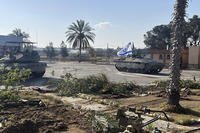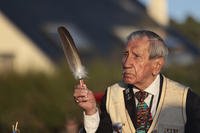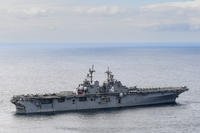Air Force Gen. Norton Schwartz's speech to the Air Force Association last week left a range of experts I spoke with as divided as the service stands. One group generally hailed Schwartz's speech, claiming it was one of the most exciting and hopeful they had heard in years from any Air Force official. The other group said Schwartz seemed to have forgotten about the fighter community and isn't this all just baloney being forced down our throats by Defense Secretary Robert Gates' appointed water carriers.
In all, I spoke to about two dozen Air Force officers, reporters with long experience covering the Air Force and analysts who make their living dissecting the service.
One Air Force official who had knowledge of the speech-writing process said Schwartz had put the speech together with aides and had not gotten much input from on high. The passion Schwartz showed was all his, this official said. And although Schwartz will probably refuse to admit it publicly, worried as he is by morale in the Air Force, he knows very well that the service faces critical challenges that could leave it crippled or provide a chance to remake and improve it.
However, a source who knows the Air Force intimately after more than 20 years analyzing it, shook his head and dismissed Schwartz's talk about rebuilding the service and committing it wholeheartedly to Unmanned Aerial Systems. "What about the fighters?" this source asked, adding that their average age is 24 years and they need replacing. The idea of using UAS' to accomplish much of what manned fighters do was just unthinkable to this analyst. And he blamed Schwartz for not addressing the issue of whether to buy more F-22s or to address the mix between F-22s and F-35s. On top of all that, Schwartz told the audience that proximity to the target did not make anyone in the Air Force any better than anyone else, a clear slap at the pilot mafia.
Another analyst said Schwartz was addressing the wrong issues, that the influence of the fighter mafia was irrelevant when manned fighter aircraft are still one of the sine qua nons of a world-class military able to power project and to engage in major strategic strikes against heavily defended targets. While UASs are excellent for ISR work, they cannot yet fly fast and strike hard with great precision, this analyst said. The Reaper (as the larger armed version of the Predator is known) can kill tactical targets with relative ease in undefended airspace but it is slow and low and would be very vulnerable operating in defended airspace.
Perhaps overshadowing all of these programmatic issues was the bedrock issue of culture. Over its history, the service has been run either by bomber pilots or by fighter jocks. Strategic Air Command was the place to be for years in the Air Force. Then the fighter wings became preeminent. Gen. Schwartz is neither a bomber nor a fighter pilot. He flew C-130s and then migrated to the special operations world, where he spent much of the second half of his career. From there, he went to the Joint Staff and rose to become commander of Transportation Command. That's hardly the kind of background to make a supporter of fighters comfortable. Even the Air Force official I spoke with conceded that Schwartz faces an uphill battle in changing the service without breaking it.
The comments I heard at AFA make it clear that Schwartz confronts an enormous task in convincing many in the Air Force that a C-130 pilot can lead them to a future where being an airman or a pilot brings glory and recognition from the other services and the world that you are one bad mother to mess with.








